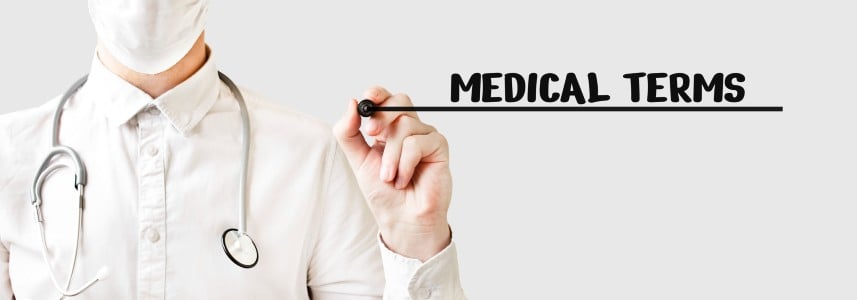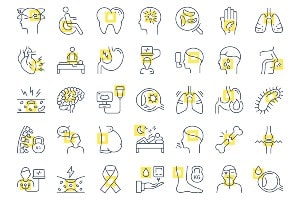About Chondromalacia Patella (Patellofemoral Syndrome)

Learn about the disease, illness and/or condition Chondromalacia Patella (Patellofemoral Syndrome) including: symptoms, causes, treatments, contraindications and conditions at ClusterMed.info.
Chondromalacia Patella (Patellofemoral Syndrome)

| Chondromalacia Patella (Patellofemoral Syndrome) |
|---|
Chondromalacia Patella (Patellofemoral Syndrome) InformationChondromalacia patella facts
How is chondromalacia patella diagnosed?Chondromalacia patella is suspected in a person with anterior knee pain, especially in teenage females or young adults. With manual compression of the kneecap while the quadriceps muscle is tightened, there can be pain. This is referred to as the positive "shrug" sign. Generally, there is no associated swelling (knee joint effusion).X-rays or MRIs may be done to confirm the inflammation on the posterior part of the patella. Is it possible to prevent chondromalacia patella?Chondromalacia patella can be prevented only in the sense that the symptoms can be prevented by avoiding any aggravating activities (running, jumping, etc.) or positions. Long-term prevention includes strengthening of the inner portion of the quadriceps muscle to help normalize the tracking of the patella. What are the symptoms and signs of chondromalacia patella?The symptoms of chondromalacia patella are generally a vague discomfort of the inner front of the knee, aggravated by activity (running, jumping, climbing or descending stairs) or by prolonged sitting with knees in a moderately bent position (the so called "theater sign" of pain upon arising from a desk or theater seat). Some patients may also have a vague sense of "tightness" or "fullness" in the knee area. Occasionally, if chronic symptoms are ignored, the associated loss of quadriceps (thigh) muscle strength may cause the leg to "give out." Besides an obvious reduction in quadriceps muscle mass, mild swelling of the knee area may occur. What causes chondromalacia patella?The patella (kneecap) is normally pulled over the end of the femur in a straight line by the quadriceps (thigh) muscle. Patients with chondromalacia patella frequently have abnormal patellar "tracking" toward the lateral (outer) side of the femur. This slightly off-kilter pathway allows the undersurface of the patella to grate along the femur, causing chronic inflammation and pain. Certain individuals are predisposed to develop chondromalacia patella: females, knock-kneed or flat-footed runners, or those with an unusually shaped patella undersurface. What is chondromalacia patella?Chondromalacia patella is abnormal softening of the cartilage of the underside the kneecap (patella). It is a cause of pain in the front of the knee (anterior knee pain). Chondromalacia patella is one of the most common causes of chronic knee pain. Chondromalacia patella results from degeneration of cartilage due to poor alignment of the kneecap (patella) as it slides over the lower end of the thighbone (femur). This process is sometimes referred to as patellofemoral syndrome. What is the prognosis (outlook) with chondromalacia patella?Under optimal circumstances, the patient should have a rapid recovery and return at full functional level. Chondromalacia patella is not felt to be a precursor to degenerative arthritis (osteoarthritis). What is the treatment for chondromalacia patella?The primary goal for treatment and rehabilitation of chondromalacia patella is to create a straighter pathway for the patella to follow during quadriceps contraction. Initial pain management involves avoiding motions which irritate the kneecap. Icing and anti-inflammatory medications (for examples, ibuprofen [Advil/Motrin] or naproxen [Aleve]) can be helpful.Selective strengthening of the inner portion of the quadriceps muscle helps normalize the tracking of the patella. Cardiovascular conditioning can be maintained by stationary bicycling (low resistance but high rpms), pool running, or swimming (flutter kick). Reviewing any changes in training prior to chondromalacia patella pain, as well as examining running shoes for proper biomechanical fit are critical to avoid repeating the painful cycle. Generally, full squat exercises with weights are avoided. Occasionally, bracing with patellar centering devices are required. Infrequently, surgical correction of knee alignment is considered.Stretching and strengthening the quadriceps and hamstring muscle groups is critical for an effective and lasting rehabilitation of chondromalacia patella. "Quad sets" are the foundation of such a physical therapy program. Quad sets are done by contraction the thigh muscles while the legs are straight and holding the contraction for a count of 10. Sets of 10 contractions are done between 15-20 times per day. |
More Diseases
A | B | C | D | E | F | G | H | I | J | K | L | M | N | O | P | Q | R | S | T | U | V | W | X | Y | Z
Diseases & Illnesses Definitions Of The Day
- Noncancerous Colloid Thyroid Nodule (Thyroid Nodules) ‐ How are thyroid nodules diagnosed?, Introduction to thyroid nodules …
- Skin, Laser Resurfacing (Laser Resurfacing) ‐ CO2 Laser Resurfacing, Complications of Laser Skin Resurfacing …
- Malignant Fibrous Histiocytoma (Bone Cancer Overview) ‐ Are there any treatments or medications that relieve bone cancer pain? …
- Double Vision ‐ Is it possible to prevent double vision?, What are the symptoms and signs of double vision? …
- Ageusia (Taste Disorders) ‐ Are taste disorders serious?, Can taste disorders be treated? …
- Autism Screening and Diagnosis ‐
- Alpha-fetoprotein Blood Test ‐ In which situations are high blood (serum) levels of AFP used as a tumor marker? …
- Polymyalgia Rheumatica ‐ How do health care professionals make a diagnosis of polymyalgia rheumatica? …
- Stump Appendicitis (Appendicitis) ‐ Appendicitis definition and facts, Are there long-term consequences of appendectomy? …
- Gonorrhea (Gonorrhea In Women) ‐ Gonorrhea facts, How is gonorrhea diagnosed?, What are sexually transmitted diseases (STDs)? …